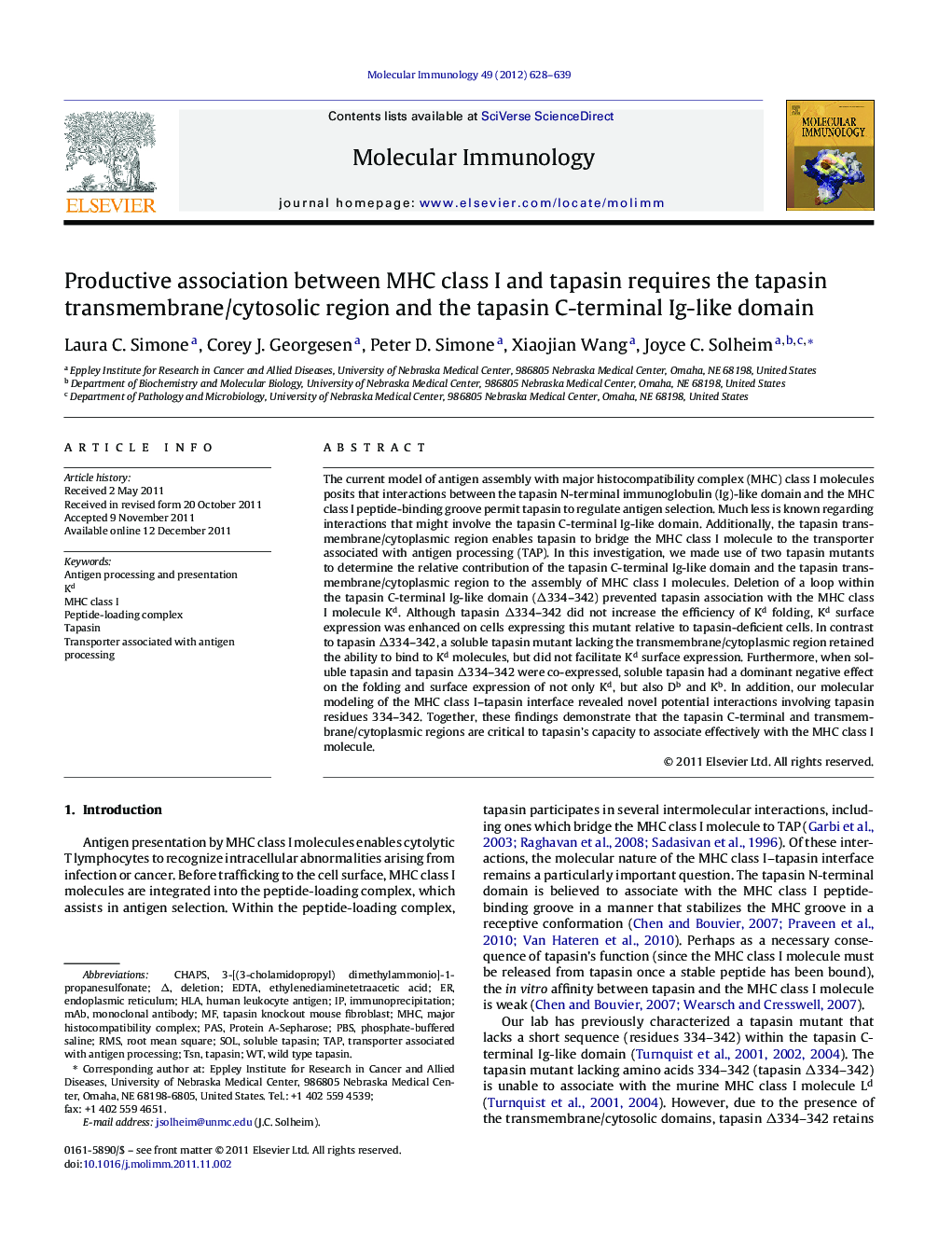| کد مقاله | کد نشریه | سال انتشار | مقاله انگلیسی | نسخه تمام متن |
|---|---|---|---|---|
| 5917409 | 1163788 | 2012 | 12 صفحه PDF | دانلود رایگان |

The current model of antigen assembly with major histocompatibility complex (MHC) class I molecules posits that interactions between the tapasin N-terminal immunoglobulin (Ig)-like domain and the MHC class I peptide-binding groove permit tapasin to regulate antigen selection. Much less is known regarding interactions that might involve the tapasin C-terminal Ig-like domain. Additionally, the tapasin transmembrane/cytoplasmic region enables tapasin to bridge the MHC class I molecule to the transporter associated with antigen processing (TAP). In this investigation, we made use of two tapasin mutants to determine the relative contribution of the tapasin C-terminal Ig-like domain and the tapasin transmembrane/cytoplasmic region to the assembly of MHC class I molecules. Deletion of a loop within the tapasin C-terminal Ig-like domain (Δ334–342) prevented tapasin association with the MHC class I molecule Kd. Although tapasin Δ334–342 did not increase the efficiency of Kd folding, Kd surface expression was enhanced on cells expressing this mutant relative to tapasin-deficient cells. In contrast to tapasin Δ334–342, a soluble tapasin mutant lacking the transmembrane/cytoplasmic region retained the ability to bind to Kd molecules, but did not facilitate Kd surface expression. Furthermore, when soluble tapasin and tapasin Δ334–342 were co-expressed, soluble tapasin had a dominant negative effect on the folding and surface expression of not only Kd, but also Db and Kb. In addition, our molecular modeling of the MHC class I–tapasin interface revealed novel potential interactions involving tapasin residues 334–342. Together, these findings demonstrate that the tapasin C-terminal and transmembrane/cytoplasmic regions are critical to tapasin's capacity to associate effectively with the MHC class I molecule.
► Tapasin Δ334–342, but not soluble tapasin, facilitates murine MHC class I surface expression.
► Soluble tapasin has a dominant negative effect over tapasin Δ334–342 on MHC class I cell surface levels.
► Soluble tapasin actively retains murine MHC class I molecules in the endoplasmic reticulum.
► Molecular modeling of the MHC class I–tapasin interface reveals novel potential interactions involving the tapasin N-terminal and C-terminal domains.
Journal: Molecular Immunology - Volume 49, Issue 4, January 2012, Pages 628–639